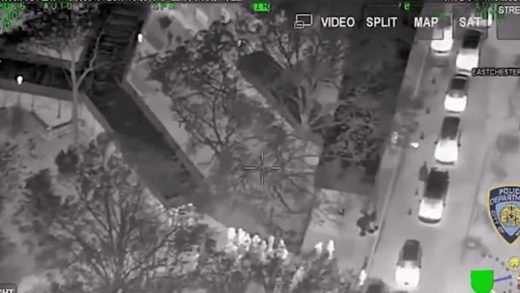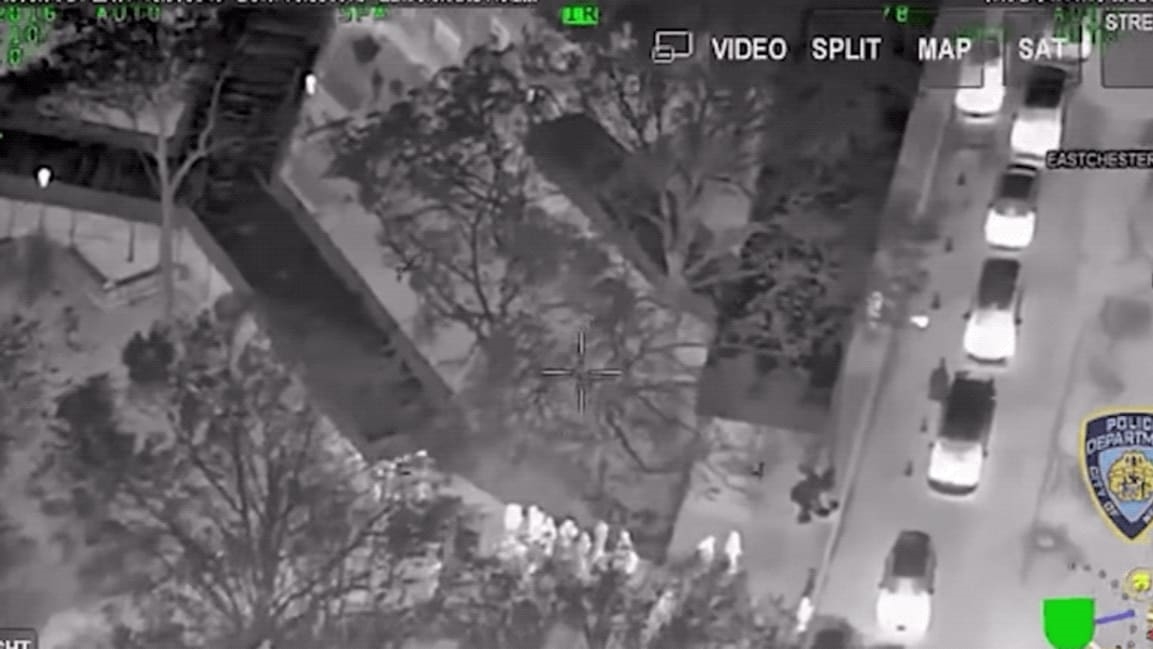Video: The heavy hand of New York’s social media-powered policing
This documentary and article originally appeared on The Appeal, a nonprofit criminal justice news site.
It’s been almost three years since the North Bronx was rocked by the largest gang raid in New York City history. One hundred and twenty people, now known as the “Bronx 120,” were indicted in April 2016, and most of them were rounded up in a one-night sweep, part of a new era of “precision policing” in the city.
Before that, the NYPD leaned heavily on a different approach, known as “stop and frisk.” From 2002 to 2012, the police conducted over 4.8 million stops of “suspicious” people to search them for weapons, drugs, and outstanding warrants. Nearly all of those people were young men of color, the vast majority of whom were completely innocent. Facing criticism and lawsuits over the biased program, the NYPD announced a pivot toward anti-gang policing.
In October 2012, the department launched “Operation Crew Cut” to target street crews and gangs. The message was simple: Rather than stop and frisk large swaths of New Yorkers, police would focus on taking out the worst of the worst. The full force and power of the department, and its partners, would surgically remove individuals who were allegedly terrorizing city neighborhoods. In 2014, then NYPD Commissioner William Bratton’s leadership team coined the term “precision policing.”
Anti-gang precision policing uses new surveillance methods and secretive conspiracy prosecutions, playing on age-old narratives about the evils of “gangs.” Babe Howell, a gang policing specialist at City University of New York School of Law, says that targeting “gang” members makes it easier for the police to avoid criticism from the public. It “allows them to aggressively mobilize race-based attitudes and yet, as in New York City, have a target that people feel comfortable with,” said Howell. “It’s not about race, it’s about gang members.”
Using the Bronx 120 raid as a starting point, we have created a documentary to examine this new era of policing in New York City. Combining personal stories with archival footage and interviews with experts, we expose precision policing’s use of coercive prosecutions, the targeting of underserved communities of color, and invasive and racially disproportionate surveillance. Harmful policing practices have not been eradicated in New York City. They have evolved.
Unraveling the ‘Bronx 120’ case
The 2016 raid we profile targeted two North Bronx gangs—the Big Money Bosses and 2Fly YGz—leading to the indictment of 120 (and eventually 125) people on conspiracy, narcotics, and firearms charges. Because of the raid, Bratton said the gangs would “no longer be free to terrorize the neighborhoods in which they grew up.” Though the vast majority of defendants are U.S. citizens, it was Homeland Security Investigations (HSI), a subset of ICE, that wiretapped the gangs. The head of HSI’s New York City office called them the “epitome of organized crime today.”
After the raid, local residents, family members of defendants, and community activists pushed back forcefully against the government’s narrative that the accused men, 24 years old on average, were part of a sophisticated criminal “enterprise” deserving of federal surveillance and prosecution. But it was difficult to fact-check their claims. Details of the case were hidden by a strict federal protective order, and the government’s press conference provided few particulars.
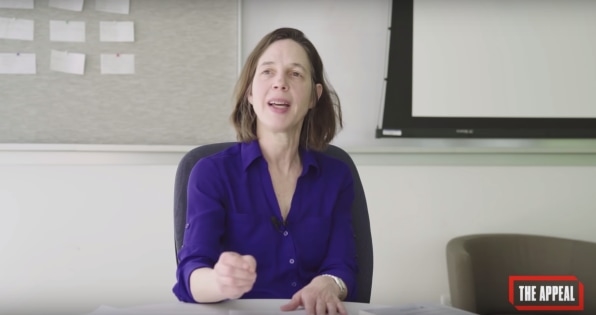
The protective order allowed only parents of defendants to view the prosecution’s “discovery” materials and prohibited them from speaking about it with anyone. Pushing the bounds of the order, in 2016, some anonymous mothers of defendants told me that defendants were being linked to the conspiracy via state crimes for which they had already served time. This practice of repurposing old state charges is a hallmark of Racketeer Influenced and Corrupt Organizations Act (RICO) prosecutions. It’s also the subject of pending Supreme Court case, Gamble v. United States.
In September 2016, I published an article and video on TheNation.com that included this detail, which amounted to a fairly minor violation of the protective order by the defendants’ families. In response, the U.S. Attorney’s Office for the Southern District of New York (SDNY) submitted a letter to a judge on the case warning that if any other violations of the protective order came to light, all families would lose access to the prosecution’s discovery. “The Government will promptly seek such an amendment should any further breaches of any kind by the Parents come to light.”
Even without so-called breaches, new information was revealed through court filings as the cases advanced. Often, those details directly contradicted the government’s initial narrative.
When the raid was announced, law enforcement linked the two gangs to “at least” eight murders. Ultimately, the SDNY charged them with only five. What the anonymous mothers told me for The Nation has since been fully verified: Past convictions were repurposed to build the case. Murders and assaults already solved by the state were used by SDNY prosecutors. But the SDNY did not repurpose just serious state crimes. Court records show the prosecution relied, in some cases, on old drug possession and drug dealing convictions to tie people to the enterprise.
In order to build its case, argue for harsher sentences, and deny bail, the prosecution also relied on sealed NYPD marijuana and crack arrests that were the result of apparent stop and frisks that never led to convictions. For example, Okeifa John was linked to the case through three sealed arrests for crack cocaine and one sealed arrest for being at an apartment where a gun was found. John was under 18 during at least two of the arrests. Growing up in the Bronx, John experienced homelessness, lived with foster parents, and was on food stamps. He eventually pleaded guilty to conspiracy to distribute narcotics and was sentenced to 38 months.
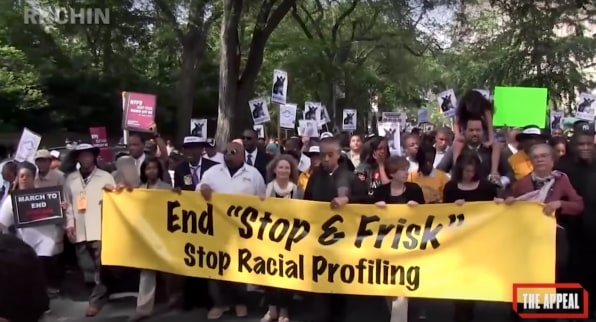
The low-level arrests represent an inversion of the original intent of the RICO Act, which, at the time of its passage, used conspiracy charges to target mob kingpins who ordered but did not personally commit criminal acts.
At least 113 of the defendants have now pleaded guilty, others made separate agreements with the government, and two went to trial, resulting in convictions. Among the guilty pleas, 25 have been sentenced to “time served,” which means they were allowed to go home the day they pleaded guilty. The 25 “time served” sentences ranged from a few years to as little as one day of incarceration. Apart from them, 23 were sentenced to three years or less, 53 for three to 10 years, and 14 to over 10 years.
Surveillance gone awry
Many of those arrested were linked through their social media accounts, often based on vague or misleading information. In one instance, the SDNY may have wrongly interpreted a social media post that read, “Beef Neva Gon sTop #biGmoneyK.” According to a letter from defense attorney Gary Becker to the judge, the prosecution believed that the “K” at the end of the rival gang’s name—”Big Money Bosses”—meant his client Kavone Horton was a “Killer of the gang’s members.”
According to Becker’s filing, the prosecution interpreted the post as, “The gang war in question will never stop, and that [the accused] will kill members of the rival Big Money Bosses gang.” The attorney pointed out that “a Google search quickly showed ‘BigMoneyK’ appears to be the moniker of a young black writer/rap artist.” Another Facebook post highlighted by the prosecution showed Horton holding a bag of money, which the prosecution said was further proof that he sold drugs. Becker argued that the teenager was working for McDonald’s at the time and making a deposit for his boss. In total, the prosecution used 41,000 pages of Facebook records to build its case, according to the defense’s filing.
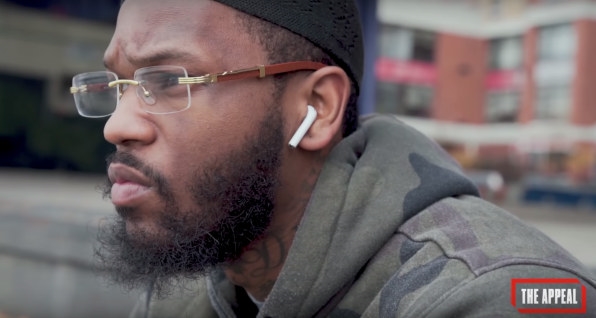
Social media surveillance is unreliable, Becker explains, and easily misused by prosecutors. “They come to the social media site looking to prove what they already believe,” he said. “They’re wearing blinders and they’re not really willing to consider that things that might look sinister to them really aren’t, if you pull back the curtains a little.”
A separate attorney filing shows the government’s surveillance extended to Metropolitan Detention Center-Brooklyn, where people were held before sentencing. According to the filing, the prosecution gained access to the center’s email service, and obtained messages protected by attorney-client privilege. The prosecution also consulted with anonymous jailhouse informants at the center, in its attempts to gather information on the defendants.
Understanding RICO
RICO makes it simpler for prosecutors to build a case and tie individuals to criminal groups. In an interview, former federal judge Shira Scheindlin—who ruled against stop and frisk—said she is concerned about the use of RICO against young men of color. Including someone in a RICO indictment does not require prosecutors prove that a person committed any criminal act beyond agreeing to participate in the conspiracy. To be found guilty, Scheindlin said, the accused “have to manifest their agreement,” she says, “and then somebody in the conspiracy has to do an overt act. Each player doesn’t have to commit an overt act. The crime is the agreement.”
The federal government can also link someone to a criminal conspiracy with the testimony of just one cooperating witness. “There are just very loose evidentiary standards when it comes to federal conspiracy cases,” explained David Patton, executive director of Federal Defenders of New York. “The prosecutors are allowed to bring in hearsay that they otherwise, in a normal case, wouldn’t be able to use.”
Court records show this loose burden of proof may have led the prosecution to make tangible errors. One example is the case of a defendant, whom the government initially tried to charge with conspiracy to commit a shooting, based solely on the account of one anonymous cooperating witness (Witness 1). The witness said they were told by another anonymous cooperating witness (Witness 2) that the defendant spoke to the shooter about a rivalry a year and a half before the shooting took place. But when the government was asked to verify this, the story unraveled: Both witnesses said the defendant was not involved and the government admitted its mistake.
Lack of oversight
“These prosecutions bear the hallmarks of incredibly unfair, coercive prosecutions,” says Howell, the gang policing specialist, who has been tracking the Bronx 120 indictments. “They would be wrong even if every individual was guilty. . . . They keep all the discovery material secret. The public is not aware of what’s going on.” A report by Howell on the Bronx 120 indictments will be released next week.
After following the Bronx 120 cases for three years, it’s clear to me that public oversight and transparency is lacking from anti-gang policing and prosecutions in the city. Basic reporting on the raids is hindered by the protective orders and reliance on the government for information.
Apart from the intense secrecy around the prosecutions, the NYPD continues to add names to a gang surveillance database that operates with little oversight; 99% of those included are people of color.
Though no constitutional challenges over the racially disproportionate impact of the city’s anti-gang policing tactics have been filed, the issue of transparency has become one key demand of advocates like the NAACP Legal Defense and Education Fund and the Center For Constitutional Rights, which are jointly suing the NYPD to provide more information about its gang database.
The Bronx 120 are not alone. There have been over 250 large gang takedowns in New York City since April 2016.
Watch the video:
(27)

